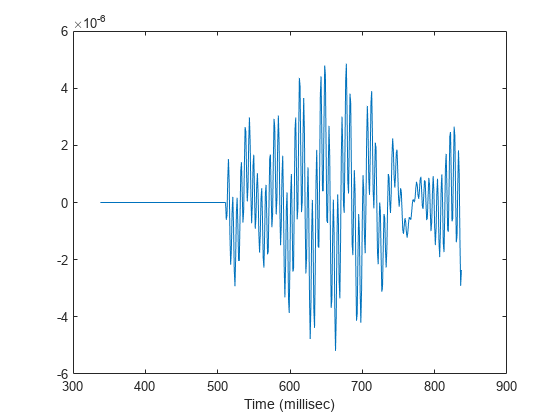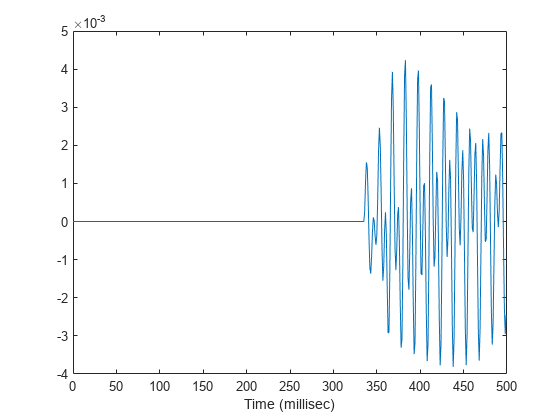step
System object: phased.MultipathChannel
Namespace: phased
Propagate signal through multipath sound channel
Description
Note
Instead of using the step method to perform
the operation defined by the System object™, you can call the object
with arguments, as if it were a function. For example, y
= step(obj,x) and y = obj(x) perform
equivalent operations.
propsig = step(propagator,sig,pathmat,dop,aloss)propsig, propagated through a multipath
channel. sig is the input signal to the channel.
The pathmat matrix contains the path time delay,
the total reflection coefficient, and the spreading loss. dop specifies
the Doppler factor and aloss specifies the frequency-dependent
absorption loss. The matrix can describe one-way or two-way propagation
from the signal source position to the signal destination position.
When you use this method for one-way propagation, the source refers to the origin of the signal and the destination refers to the receiver. You can use one-way propagation modeling to model passive sonar and underwater communications.
When you use this method for two-way propagation, the destination refers to the reflecting target, not the sonar receiver. A two-way path consists of a two identical one-way paths from source to target and back to receiver (collocated with the source). You can use two-way propagation to model active sonar systems.
Note
The object performs an initialization the first time the object is executed. This
initialization locks nontunable properties
and input specifications, such as dimensions, complexity, and data type of the input data.
If you change a nontunable property or an input specification, the System object issues an error. To change nontunable properties or inputs, you must first
call the release method to unlock the object.
Note
Instead of using the step method to perform
the operation defined by the System object, you can call the object
with arguments, as if it were a function. For example, y
= step(obj,x) and y = obj(x) perform
equivalent operations.
Input Arguments
Output Arguments
Examples
Version History
Introduced in R2017a


